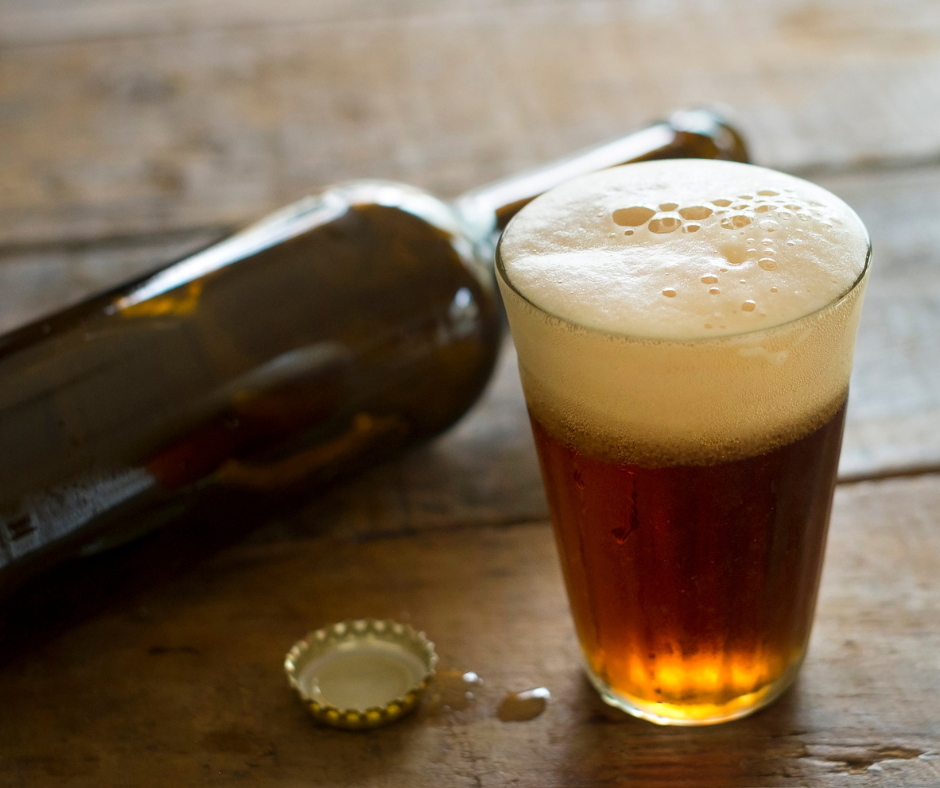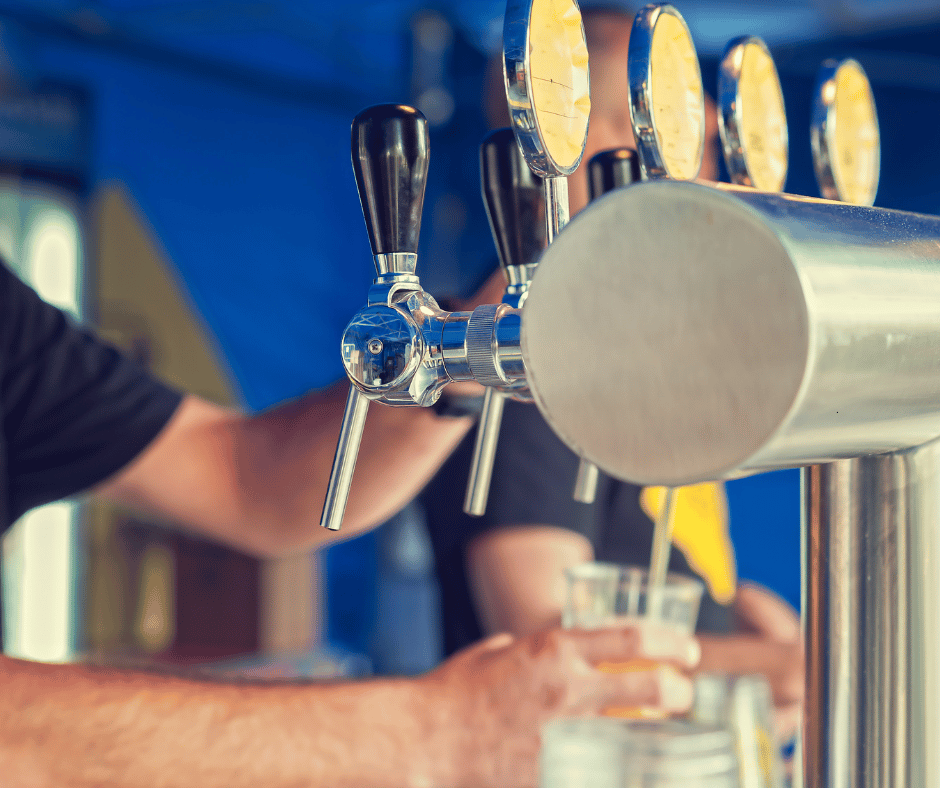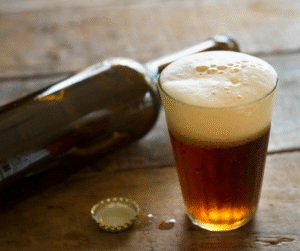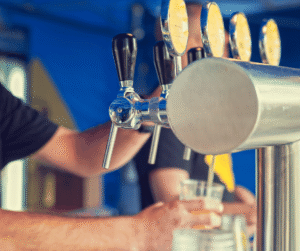Picture this: a pint poured ice-cold, looking perfect — but the first sip tastes of nothing. The flavour’s muted. Now imagine the opposite: a warm pint that tastes flat, fizzy in the wrong way, and lacks any crispness.
Both are caused by one simple issue — serving beer at the wrong temperature.
Temperature plays a critical role in how beer tastes, smells, and feels in the mouth. Serve it too cold, and you lose aroma and flavour. Serve it too warm, and it becomes heavy, lifeless, and unpleasant.
But what is the right temperature to serve the perfect pint?
That depends on the beer style, the system used, and the environment it’s served in.
In this post, you’ll learn:
- The ideal beer serving temperatures by style
- What happens when beer is too warm or too cold
- How to achieve consistency in cellar and line temperatures
- Tips for maintaining taste and quality in draught systems
Whether you’re managing a bar, brewing professionally, or pouring pints at home, understanding how temperature affects beer can improve every serve.
Understanding Beer Temperatures — What’s the Science Behind It?
Serving temperature directly affects how a beer looks, smells, and tastes. That’s not opinion — it’s chemistry.
Cold suppresses aroma. Warmer temperatures allow flavours and aromas to emerge.
When beer is too cold, the volatile compounds that carry hop, malt, or yeast aromas are less active. This dulls the nose and mutes the taste. Conversely, slightly warmer serving temperatures help those compounds become more expressive — especially important for complex or aromatic styles.
Why does lager taste so crisp cold? Because lower temperatures — around –5°C to 1°C — enhance carbonation and reduce perceived sweetness, delivering a clean, refreshing finish.
Why do ales need a bit more warmth? Warmer temperatures (typically 7–12°C) bring out richer malt notes, yeast character, and bitterness. Serve too cold, and those traits are lost.
In simple terms:
- Cold = crisp, clean, less flavour
- Warm = more aroma, fuller flavour, less carbonation bite
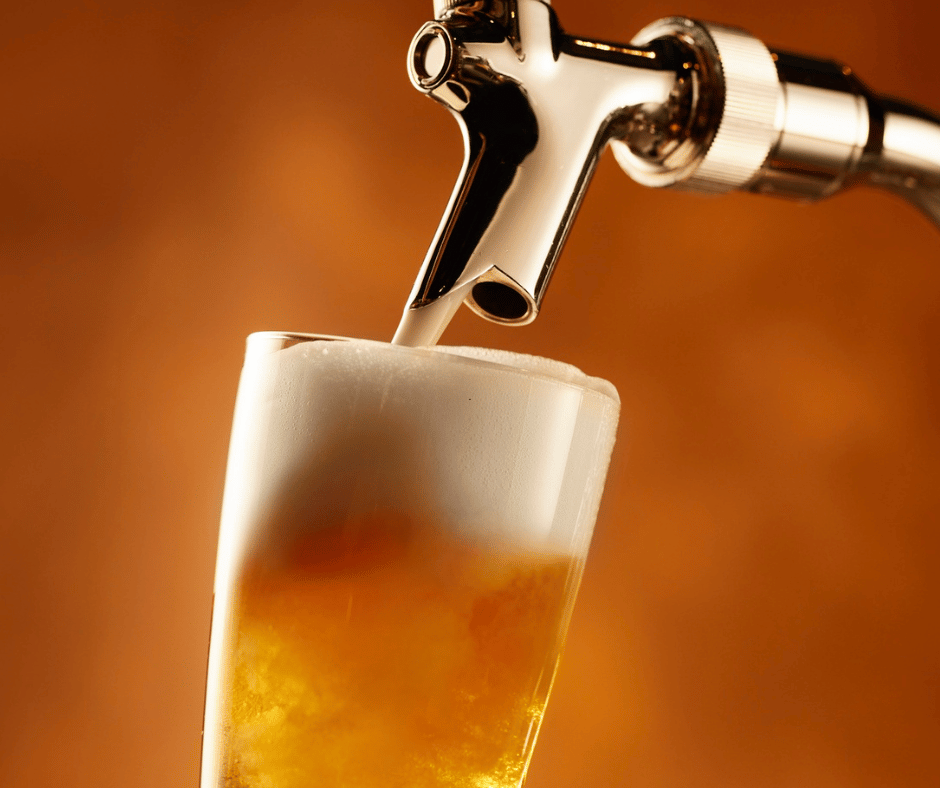
Temperature Guidelines by Beer Style
Serving beer at the right temperature enhances flavour, aroma, and overall drinking experience. Different styles have different needs — some taste better crisp and cold, while others need a little warmth to reveal their complexity.
Here’s a quick reference guide to ideal serving temperatures:
| Beer Style | Temperature (°C) | Temperature (°F) |
| Light lagers, pilsners | 3–7 °C | 38–45 °F |
| Pale ales, IPAs | 7–10 °C | 45–50 °F |
| Belgian ales, wheat beers | 8–12 °C | 46–54 °F |
| Stouts, porters | 10–13 °C | 50–55 °F |
| Real ales, cask ales | 10–14 °C | 50–57 °F |
Tip: Lower temperatures reduce sweetness and emphasise bitterness and carbonation. Warmer temperatures bring out esters, malt depth, and subtle yeast character — especially important for darker, stronger, or bottle-conditioned styles.
Serving vs Storage Temperature
Understanding the difference between how beer is stored and how it’s served is key to maintaining quality and taste.
What’s the difference?
- Storage temperature is typically 1–2 °C cooler than the recommended serving temperature. This ensures the beer is chilled and ready to pour but still allows it to warm slightly in the glass.
- Serving temperature is when the beer reaches your glass — the moment when flavour and aroma should be at their peak.
Why it matters
Over-chilling beer in storage can mute flavour, flatten aroma, and reduce mouthfeel. On the other hand, if beer is stored too warm, it risks staleness, excessive foam, or spoilage — especially for lighter styles or unfiltered brews.
Practical tips for different setups
Cellar systems:
- Set cellar cooling to keep kegs around 2–3 °C.
- Allow lines to warm slightly toward the tap to match the style’s ideal range.
- Monitor storage temperature regularly with calibrated digital thermometers.
Fridge setups (home or small bars):
- Use adjustable thermostats to fine-tune temperature.
- Store beers in lower zones for cold styles (lagers), and upper zones for warmer styles (stouts, ales).
- Let stronger or bottle-conditioned beers rest at room temperature for 5–10 minutes before serving.
Maintaining a stable storage temperature just below serving temp ensures consistency from the first pour to the last — and avoids the common mistake of serving beer too cold for its style.
Real‑World Tips for Getting It Right
Serving beer at the correct temperature doesn’t need to be complicated — but it does require attention to detail. These practical tips can help ensure your beer delivers consistent flavour and quality every time.
1. Measure temperature in the glass — not just the keg
Keg temperature is important, but what matters most is the temperature in the glass when the beer is actually served.
- Use a digital thermometer probe to test the beer’s temperature at the point of dispense.
- Allow for slight warming between keg and tap, especially if the beer travels through long lines or warm environments.
2. Avoid freezer-cold glasses
Serving from frozen or overly chilled glasses can cause problems:
- Flavour is muted when the beer is too cold.
- Head formation increases, which may result in waste and poor presentation.
- Frosted glasses can also introduce ice crystals, which affect carbonation and mouthfeel.
Instead, store glasses in a cool, dry cabinet or use a dedicated glass chiller set just above 0 °C.
3. Let darker beers breathe and warm slightly
Dark beers such as stouts and porters release more aroma and complexity as they warm slightly in the glass.
- Serve around 10–13 °C, then let the glass sit for a minute or two before drinking.
- Avoid pouring straight from fridge-cold storage for high-ABV or bottle-conditioned styles.
4. Invest in temperature control tools
- Use a digital thermometer to regularly check both keg and glass temperatures.
- Consider smart fridges or temperature logging systems for precise control in bars or taprooms.
- For commercial setups, make sure cellar cooling systems are well maintained and calibrated.
5. Match service habits to beer styles
- Serve lagers cold and quickly.
- Let ales and darker beers sit briefly.
- Never guess — always measure.
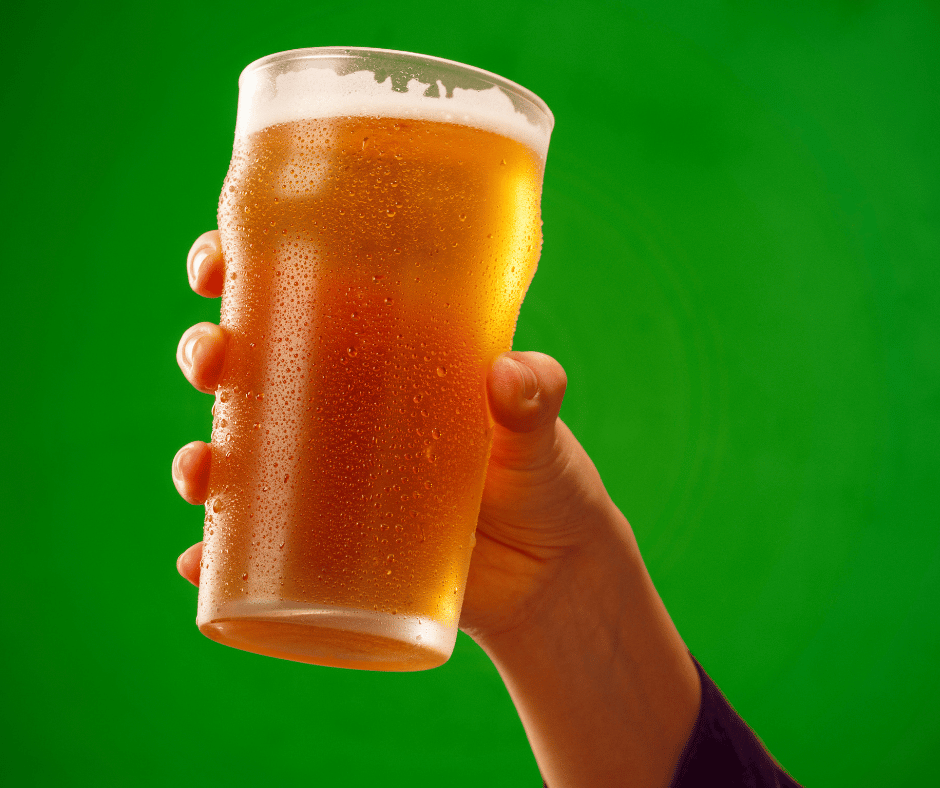
How Glassware and Serving Conditions Affect Temperature
The type of glass, the environment, and even how you rinse your glass can all influence beer temperature. These subtle details can make the difference between a refreshing pint and one that falls flat.
Glass shape and material matter
Different vessels retain or transfer heat in different ways:
- Cans and bottles: These warm up quickly once removed from refrigeration. Best consumed soon after opening.
- Pint glasses: Standard glass warms quickly in the hand, which can change the flavour after just a few minutes.
- Tulip or stemmed glasses: These help preserve temperature by limiting hand contact, ideal for high-ABV or aromatic beers.
Using the right glass helps match serving conditions to beer style — especially important for stronger or more delicate brews.
Serving environment changes everything
- Warm rooms will cause beer to rise in temperature faster, particularly in open glassware.
- Outdoor service in the summer? Expect lagers to warm within minutes if not properly chilled beforehand.
- Cold cellars or bars can sometimes mask temperature shifts if not actively monitored.
Control your environment wherever possible, and always consider where and how the beer is being served.
Pre-rinse with room-temperature water
Rinsing a glass with room-temperature water before pouring:
- Reduces thermal shock
- Helps stabilise beer temperature
- Prevents excessive foaming from chilled glass surfaces
Avoid using ice-cold water or chilled rinsers that can alter head retention and mute flavour.
The Role of Clean Gas and Equipment in Maintaining Temperature
Consistent temperature isn’t only about cooling systems — your gas supply and dispense equipment also play a role. Fluctuations in pressure or contamination in gas lines can cause temperature drift and affect beer quality.
Dirty or faulty systems can change beer temperature
- Contaminated CO₂ lines may retain heat or cold in spots, leading to inconsistent temperature from tap to glass.
- Frosting regulators or frozen lines often point to unstable gas flow or trapped moisture in the system.
- Dirty or unmaintained beer towers can also introduce temperature spikes or drops along the line.
Over time, these issues lead to flat beer, increased waste, and customer dissatisfaction.
Stable gas = stable pour = stable temperature
Sure Purity’s Carboguard and Carboguard Mini filters remove moisture, oil, and odour from the gas supply. This ensures:
- Clean, dry CO₂ for better carbonation stability
- Even gas pressure, preventing surges that affect cooling
- Reduced risk of freeze-thaw damage in regulators
These filters support consistent pressure and temperature across your system — protecting both your beer and your reputation.
Temperature control is part of a bigger picture
From cellar to glass, every part of the dispense system contributes to the final pint. Clean gas and well-maintained lines help keep:
- Flavour consistent
- Carbonation stable
- Temperature within the correct range
Common Mistakes and How to Avoid Them
Even the best beer can fall flat if served at the wrong temperature. These common errors are easy to make — but also easy to fix:
- Serving all beers ice-cold
Suppresses aroma and dulls the intended flavour profile. - Using frozen or over-chilled glassware
Causes over-foaming, poor head retention, and a muted pour. - Not adjusting for room temperature
Warmer ambient settings require lower keg temps to compensate. - Failing to monitor cellar temperature consistently
Small drifts can throw off your whole system, especially overnight. - Neglecting draught line hygiene or using contaminated gas
Affects not only flavour, but also pressure and temperature regulation.
Avoiding these mistakes ensures every pint tastes the way the brewer intended.
Conclusion – Serve Beer at the Right Temperature for Best Results
Serving beer at the right temperature isn’t just about following a chart — it’s about understanding the science, the style, and the system that delivers it.
When beer is poured at its ideal temperature, it reveals its full flavour, aroma, and texture. Whether you’re running a busy taproom or a home setup, the key is consistency — in monitoring, equipment, and gas.
Key Takeaways:
- Temperature brings out beer’s flavour, aroma, and carbonation.
- Every style has its own ideal range — don’t use a one-size-fits-all rule.
- Measure temperature in the glass, not just in the keg.
- Avoid frozen glassware and control the room environment.
- Clean, filtered gas supports consistent pressure and temperature.
- Regular maintenance and checks are essential.
Temperature is one of the most overlooked parts of beer quality. But it’s also one of the easiest to control.
Explore how Sure Purity’s gas filtration products can help you maintain a consistent pour, reduce waste, and protect beer quality at every stage of dispense.

